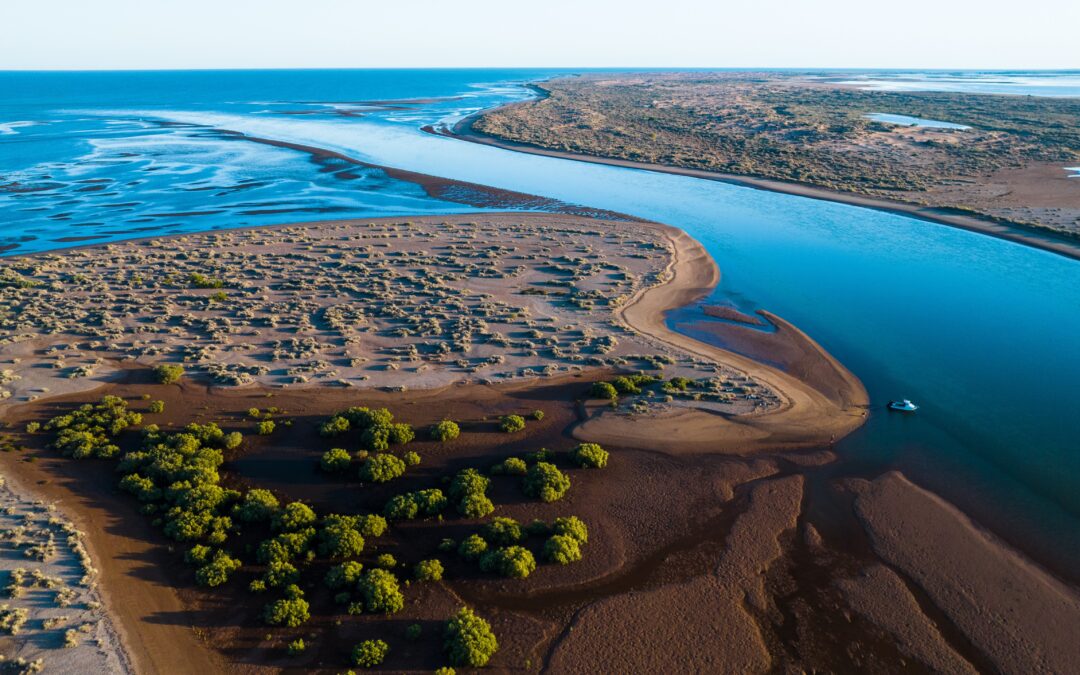MEDIA RELEASE:
- Exmouth Gulf is renowned sanctuary for threatened species such as sawfish, dugongs and turtles, as well as mangroves, seagrasses, corals and sponges
- Saltworks is massive in scale, equivalent to 52 of Perth’s Kings Park
- Saltworks at odds with WA Government’s plans to protect Exmouth Gulf
German industrial company K+S has lodged its plans to build a giant saltworks on the shores of the renowned Exmouth Gulf, a crucial part of the adjacent World Heritage-listed Ningaloo ecosystem, the Australian Marine Conservation Society’s Protect Ningaloo campaign said today as the company released its Environmental Review Documents.
The proposed saltworks could undermine the Western Australian Government’s plans to protect the Gulf, a sanctuary for threatened species such as sawfish, dugongs and turtles, following a recommendation from the WA Environmental Protection Authority (EPA). In December 2021, the WA Government announced it would create new protected areas for Exmouth Gulf, but these would be sorely compromised by a saltworks that risks vital components of the environment that the government is seeking to protect.
Protect Ningaloo Director Paul Gamblin said: “It’s clear that industrial proponents are swimming against the tide of both scientific and public opinion for Exmouth Gulf, Ningaloo. The ‘Wild West’, proponent-driven era in the region was brought to an end in 2021 when the WA Government sent a strong signal that Exmouth Gulf needs to be protected. Unfortunately, it seems that German industrial company K+S has missed the memo and is seeking approval for its mega salt project before the new Exmouth Gulf protection plan has even left the starting blocks.”
The salt project is proposed to be constructed over a nationally listed wetland, one of the last undisturbed arid-zone wetland ecosystems along the coast. This wetland provides critical habitat and underpins biological productivity in the Gulf, supporting many threatened species found in the area, including sawfish, turtles, dugongs, shovelnose rays and migratory shorebirds.
Salt pond walls many kilometres long risk disrupting nutrient delivery via tidal or floodwaters into the Gulf and impacting this vital marine food chain. There is also the risk of discharge of toxic hypersaline water from the salt ponds that could kill highly sensitive mangroves and harm marine animals, such as critically endangered sawfish and shovelnose rays, living in the nearby creeks and marine waters.
The giant salt project’s impacts are potentially so serious and far-reaching for threatened species and important habitats – already under pressure from climate change – that it will be assessed by both the WA Environmental Protection Authority and the Australian Government at the highest level possible.
Mr Gamblin said: “The right thing for K+S to do would be to withdraw its project for the good of the Exmouth Gulf ecosystem and its long list of threatened species, but instead the community now has to dig deep once again and fight a project that shouldn’t have left the drawing board.
“A similar salt project earmarked for an area just south of the K+S proposal was rejected by the EPA nearly 15 years ago due to its likely impacts and risks to the environment. The recognition of Exmouth Gulf’s importance has only grown sharply since then so if the case to protect the Gulf from industrial salt production was strong back then, it’s emphatic now.
“There is an alternative, positive future for Exmouth Gulf with many new opportunities to protect its globally significant natural and cultural heritage and the jobs it supports, and to enhance economic resilience through sustainable, nature-based economic activity. Tourism is Exmouth’s biggest industry, which could be enhanced by well-managed eco-tourism ventures, Aboriginal land and sea joint management, cultural tourism and interpretation, marine science, educational tourism and blue carbon management.”
The idyllic Exmouth Gulf has as much spectacular marine life as its more famous neighbour Ningaloo Reef, and is often referred to as Ningaloo’s nursery.
The Gulf is a globally significant humpback whale nursery, serving as a waystation to humpback mothers with young calves looking to rest and fatten up in preparation for the long trip to the Antarctic. It also boasts dugongs, dolphins, orcas and rare marine species that inhabit the relatively undeveloped area.
Exmouth Gulf has about 800 species of fish and 831 species of molluscs. It has at least 63 species of sharks and rays and at least 15 species of sea snakes, some critically endangered, but there could be many more – the sharks, rays and reptiles are big knowledge gaps.

